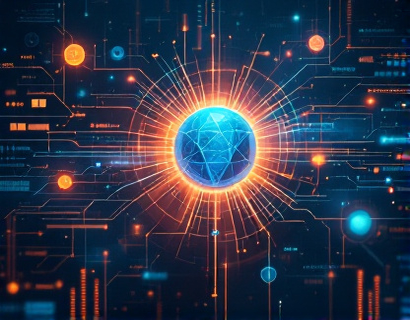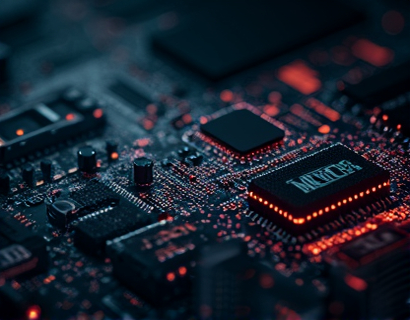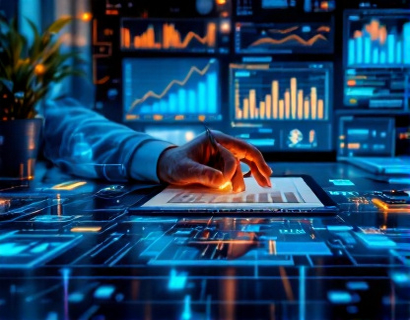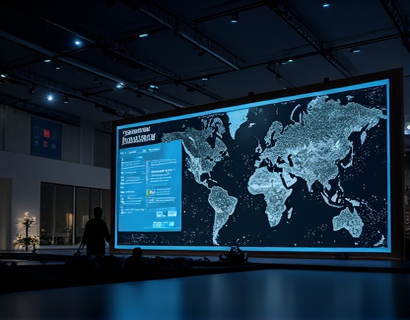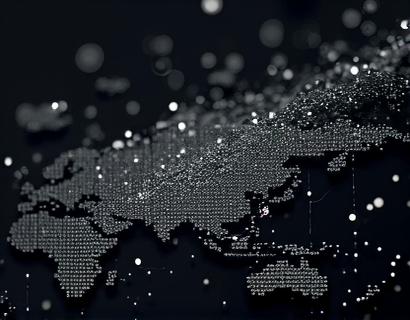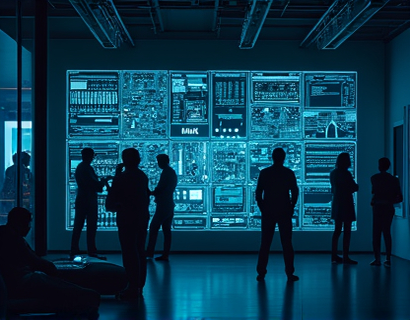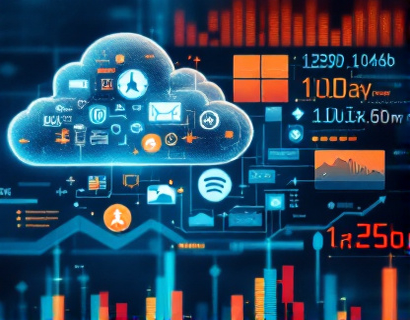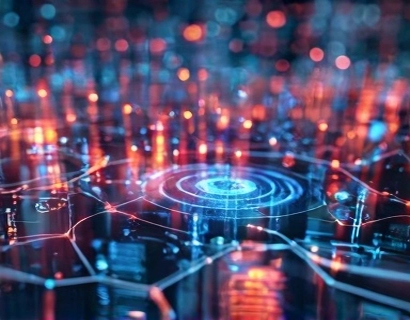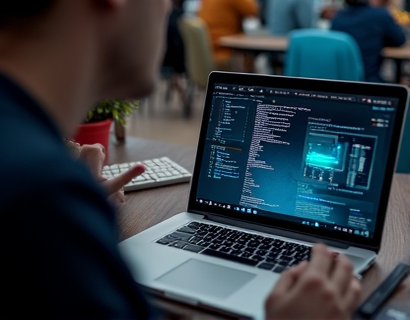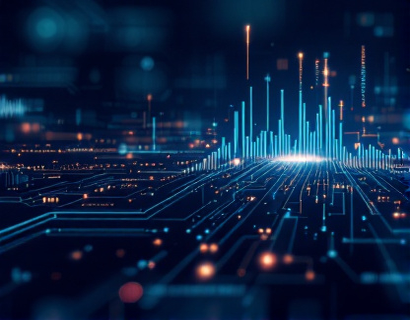Decentralized Productivity: Turbo-Charged with AI and Crypto Integration
The intersection of artificial intelligence and cryptocurrency is giving birth to a new era of decentralized productivity tools. These cutting-edge technologies are not just evolving independently but are merging to create advanced systems that significantly enhance efficiency and redefine user experience. This article delves into the transformative impact of this fusion, exploring how AI and crypto are revolutionizing the way we work and interact with digital solutions. Whether you are a tech enthusiast, a productivity professional, or an early adopter of digital innovations, understanding these developments is crucial for staying ahead in the rapidly changing digital landscape.
Understanding Decentralization in Productivity Tools
Decentralization, at its core, refers to the distribution of functions, processes, or activities away from a central authority. In the context of productivity tools, this means moving away from centralized platforms controlled by a single entity to a more distributed and democratic system. Decentralized applications, or dApps, leverage blockchain technology to ensure transparency, security, and user control. This shift is pivotal in creating a more resilient and user-centric ecosystem.
Traditional productivity tools often rely on centralized servers, making them vulnerable to single points of failure, data breaches, and censorship. Decentralized tools, on the other hand, distribute data across a network of nodes, reducing the risk of centralized failures and enhancing data integrity. For instance, a decentralized task management tool can store user data across multiple nodes, ensuring that even if one node fails, the data remains accessible and secure.
AI: The Brain Behind Decentralized Productivity
Artificial intelligence plays a crucial role in enhancing the functionality and user experience of decentralized productivity tools. AI algorithms can process vast amounts of data, identify patterns, and make predictions, all of which are invaluable in a decentralized environment. For example, an AI-powered decentralized calendar can learn user habits, suggest optimal meeting times, and even automate scheduling with other decentralized apps, all while ensuring data privacy and user control.
One of the key benefits of AI in decentralized tools is its ability to provide personalized experiences. By analyzing user behavior and preferences, AI can tailor recommendations and automate tasks in a way that feels intuitive and seamless. This level of personalization is particularly powerful in a decentralized setting, where users have more control over their data and workflows.
Enhancing Efficiency through AI and Crypto Integration
The combination of AI and cryptocurrency creates a synergistic effect that significantly boosts efficiency in productivity tools. Cryptocurrency, with its inherent properties of decentralization and security, provides a robust foundation for transactions and data exchange. When paired with AI, these tools can automate complex processes, reduce manual errors, and streamline workflows.
Consider a decentralized project management platform that uses AI to optimize resource allocation and task assignment. The AI can analyze project data, predict bottlenecks, and suggest optimal resource distribution, all while ensuring that transactions and data sharing are secure and transparent through blockchain. This not only speeds up the project lifecycle but also builds trust among team members, as all actions are verifiable and immutable.
User Experience: The Cornerstone of Decentralized Tools
User experience (UX) is a critical factor in the adoption and success of any productivity tool. Decentralized tools integrated with AI and crypto are no exception. The goal is to create interfaces that are intuitive, responsive, and secure, ensuring that users can focus on their work without being hindered by technical complexities.
One of the challenges in decentralized UX design is maintaining a seamless experience across different devices and networks. AI can help address this by dynamically adjusting the interface based on user context, such as device type, network speed, and user preferences. For instance, an AI-driven decentralized note-taking app can automatically sync notes across devices, ensuring that users have access to their information wherever they are, without compromising on security.
Moreover, AI can enhance accessibility by providing features like real-time translation, text-to-speech, and customizable interfaces. These features not only make the tools more user-friendly but also inclusive, catering to a broader audience.
Security and Privacy: Trust at the Core
Security and privacy are paramount in the realm of decentralized productivity tools. Users need to trust that their data is safe and that they have control over it. Blockchain technology, with its cryptographic algorithms and decentralized consensus mechanisms, provides a strong foundation for secure data storage and transmission.
AI complements this by enhancing security through advanced threat detection and response systems. Machine learning algorithms can identify unusual patterns and potential security breaches in real-time, allowing for proactive measures to be taken. For example, an AI-powered decentralized email service can monitor incoming messages for phishing attempts and malicious attachments, ensuring that users are protected from common cyber threats.
Privacy is another critical aspect. Decentralized tools can offer end-to-end encryption and zero-knowledge proofs, ensuring that only the user can access their data. AI can further enhance privacy by anonymizing data and ensuring that user behavior is not traceable, providing a higher level of confidentiality.
Case Studies: Real-World Applications
To better understand the practical applications of AI and crypto integration in productivity tools, let's explore a few real-world examples.
One notable example is a decentralized collaboration platform that uses AI to facilitate seamless teamwork. This platform allows users to create and manage projects, assign tasks, and communicate in a secure, decentralized environment. The AI component analyzes team dynamics and project progress, offering insights and recommendations to improve collaboration and efficiency. All data is stored on a blockchain, ensuring transparency and immutability.
Another example is a decentralized finance (DeFi) tool that integrates AI for automated investment management. Users can set up automated investment strategies that adjust based on market conditions, all while maintaining full control over their assets. The AI analyzes market data, predicts trends, and executes trades, providing a hands-off yet highly efficient investment experience.
Challenges and Future Prospects
While the potential of AI and crypto integration in productivity tools is immense, there are challenges that need to be addressed. One of the primary challenges is the technical complexity involved in building and maintaining decentralized systems. Developers must have a deep understanding of both blockchain technology and AI to create robust and user-friendly tools.
Another challenge is user adoption. Many users are still unfamiliar with decentralized technologies and may be hesitant to switch from traditional centralized tools. Education and user-friendly interfaces are crucial in overcoming this barrier. Additionally, regulatory frameworks for decentralized applications are still evolving, and compliance will be an ongoing concern.
Looking ahead, the future of decentralized productivity tools is promising. As blockchain technology matures and AI algorithms become more sophisticated, we can expect even more innovative solutions. The integration of other emerging technologies, such as the Internet of Things (IoT) and quantum computing, will further enhance the capabilities of these tools, making them even more powerful and versatile.
In conclusion, the fusion of AI and cryptocurrency is revolutionizing the landscape of productivity tools. By leveraging the strengths of decentralization and intelligent automation, these tools are not only improving efficiency and user experience but also setting new standards for security and privacy. As the technology continues to evolve, the potential for transformative change in how we work and collaborate is immense.





